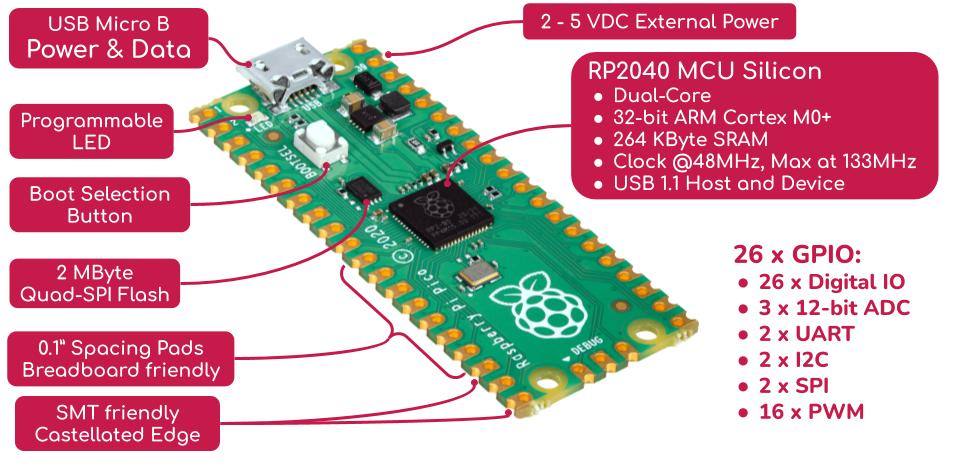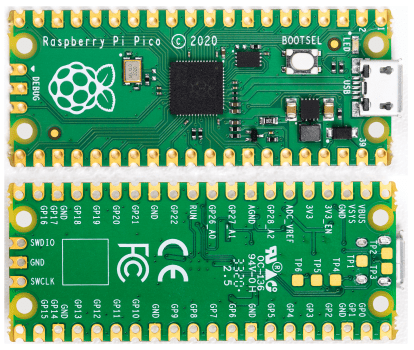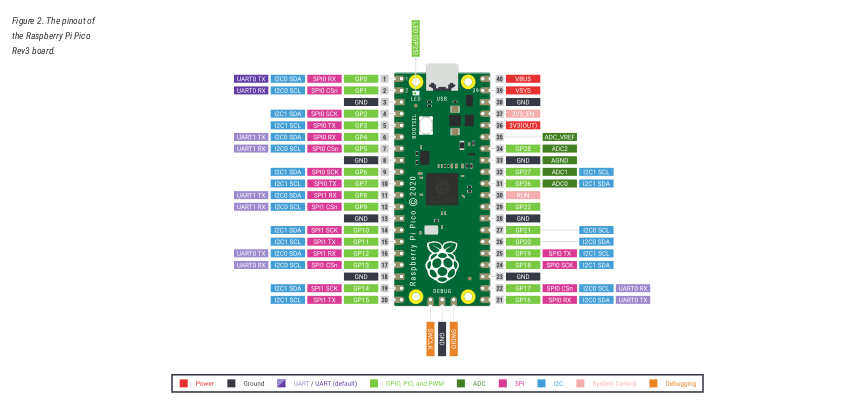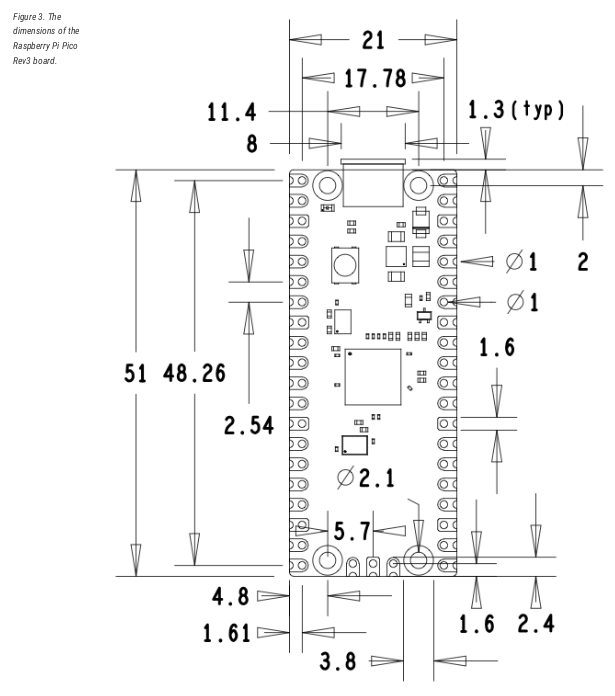It is not often that we get the opportunity to be one of the first people to get our hands onto a new product, So when my friends at Cytron Technologies asked me if I would like to do a review on a new Raspberry Pi product last week, I was definitely interested. Details were few, as the product was still under an NDA, but at last, I got the datasheets and some details on Tuesday, enough to start writing about the new product before the big Launch on Thursday the 21st of January 2021…
So, what am I trying to say? Well, It seems that the Raspberry Pi Foundation has released a new product, and from first impressions, it seems to be a game-changer… Lets not get confused. I am not speaking about a full size Raspberry Pi Board, or the compute module… No, The Pi Foundation has released an RP2040 Microprocessor based development board, in the same form factor as an Arduino Nano.

This will be an introduction post, and when I receive the device to play with, which will be soon, I will start with a short series on its features and capabilities… For now, lets look at some of the specifications

Features:
Raspberry Pi Pico has been designed to be a low cost yet flexible development platform for RP2040, with the following
key features:
• RP2040 microcontroller with 2MByte Flash
• Micro-USB B port for power and data (and for reprogramming the Flash)
• 40 pin 21×51 ‘DIP’ style 1mm thick PCB with 0.1″ through-hole pins also with edge castellations
◦ Exposes 26 multi-function 3.3V General Purpose I/O (GPIO)
◦ 23 GPIO are digital-only and 3 are ADC capable
◦ Can be surface mounted as a module
• 3-pin ARM Serial Wire Debug (SWD) port
• Simple yet highly flexible power supply architecture
◦ Various options for easily powering the unit from micro-USB, external supplies or batteries
• High quality, low cost, high availability
• Comprehensive SDK, software examples and documentation
RP2040 key features: (Datasheet available for download at the bottom of this post)
• Dual-core cortex M0+ at up to 133MHz
◦ On-chip PLL allows variable core frequency
• 264K multi-bank high performance SRAM
• External Quad-SPI Flash with eXecute In Place (XIP)
• High performance full-crosspoint bus architecture
• On-board USB1.1 (device or host)
• 30 multi-function General Purpose IO (4 can be used for ADC)
◦ 1.8-3.3V IO Voltage (NOTE Pico IO voltage is fixed at 3.3V)
• 12-bit 500ksps Analogue to Digital Converter (ADC)
• Various digital peripherals
◦ 2x UART, 2x I2C, 2x SPI, up to 16 PWM channels
◦ 1x Timer with 4 alarms, 1x Real Time Counter
• Dual Programmable IO (PIO) peripherals
◦ Flexible, user-programmable high-speed IO
◦ Can emulate interfaces such as SD Card and VGA
Pico provides minimal (yet flexible) external circuitry to support the RP2040 chip (Flash, crystal, power supplies and
decoupling and USB connector). The majority of the RP2040 microcontroller pins are brought to the user IO pins on the left and right edge of the board. Four RP2040 IO are used for internal functions – driving an LED, on-board Switched Mode Power Supply (SMPS) power control and sensing the system voltages.
Pico has been designed to use either soldered 0.1″ pin-headers (it is one 0.1″ pitch wider than a standard 40-pin DIP package) or can be used as a surface mountable ‘module’, as the user IO pins are also castellated. There are SMT pads underneath the USB connector and BOOTSEL button, which allow these signals to be accessed if used as a reflow-soldered SMT module.

The Pico uses an on-board buck-boost SMPS which is able to generate the required 3.3 volts (to power RP2040 and external circuitry) from a wide range of input voltages (~1.8 to 5.5V). This allows significant flexibility in powering the unit from various sources such as a single Lithium-Ion cell, or 3 AA cells in series. Battery chargers can also be very easily integrated with the Pico powerchain.
Reprogramming the Pico Flash can be done using USB (simply drag and drop a file onto the Pico which appears as a mass storage device) or via the Serial Wire Debug (SWD) port. The SWD port can also be used to interactively debug code running on the RP2040.
Mechanical Specifications
The Raspberry Pi Pico is a single sided 51x21mm 1mm thick PCB with a micro-USB port overhanging the top edge and dual castellated/through-hole pins around the remaining edges. Pico is designed to be usable as a surface mount module as well as being in Dual Inline Package (DIP) type format, with the 40 main user pins on a 2.54mm (0.1″) pitch grid with 1mm holes and hence compatible with veroboard and breadboard. Pico also has 4x 2.1mm (+/- 0.05mm) drilled mounting holes to provide for mechanical fixing, see Figure 3.

Conclusion
I hope that this is enough details to get all of you interested and eager for more details…
In the next part of this series, I will focus on getting started with this new board, as well as do the official unboxing…
Please stay tuned for more details…

